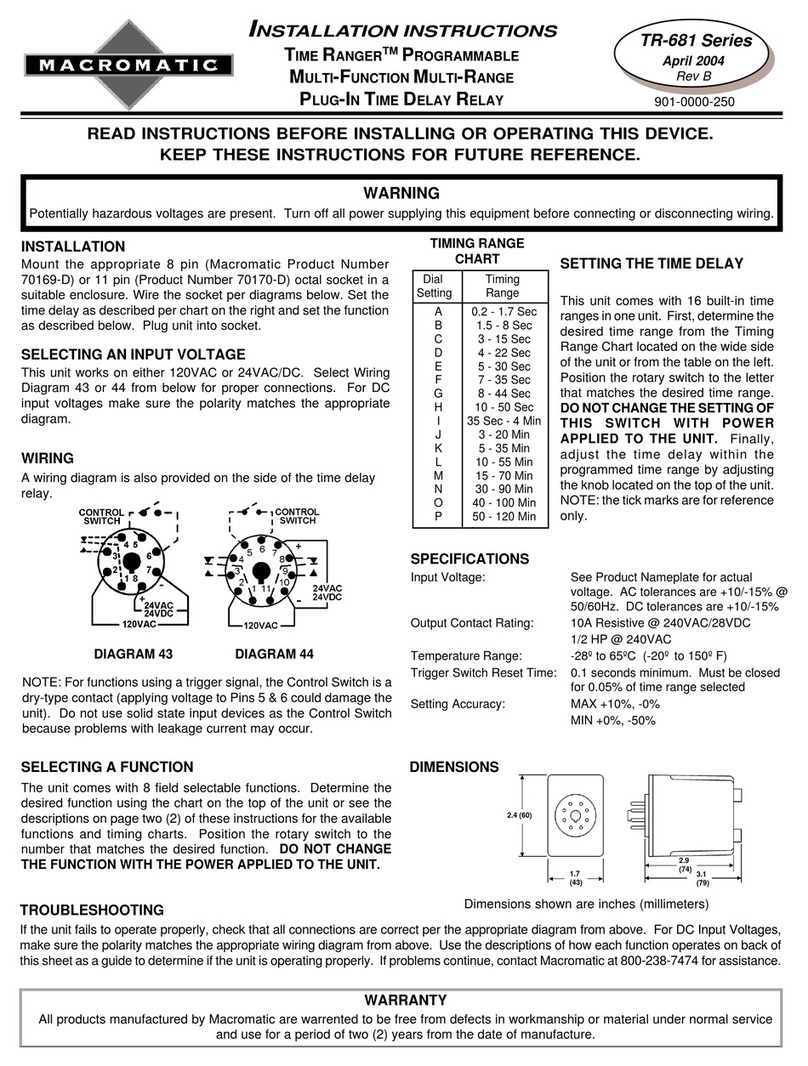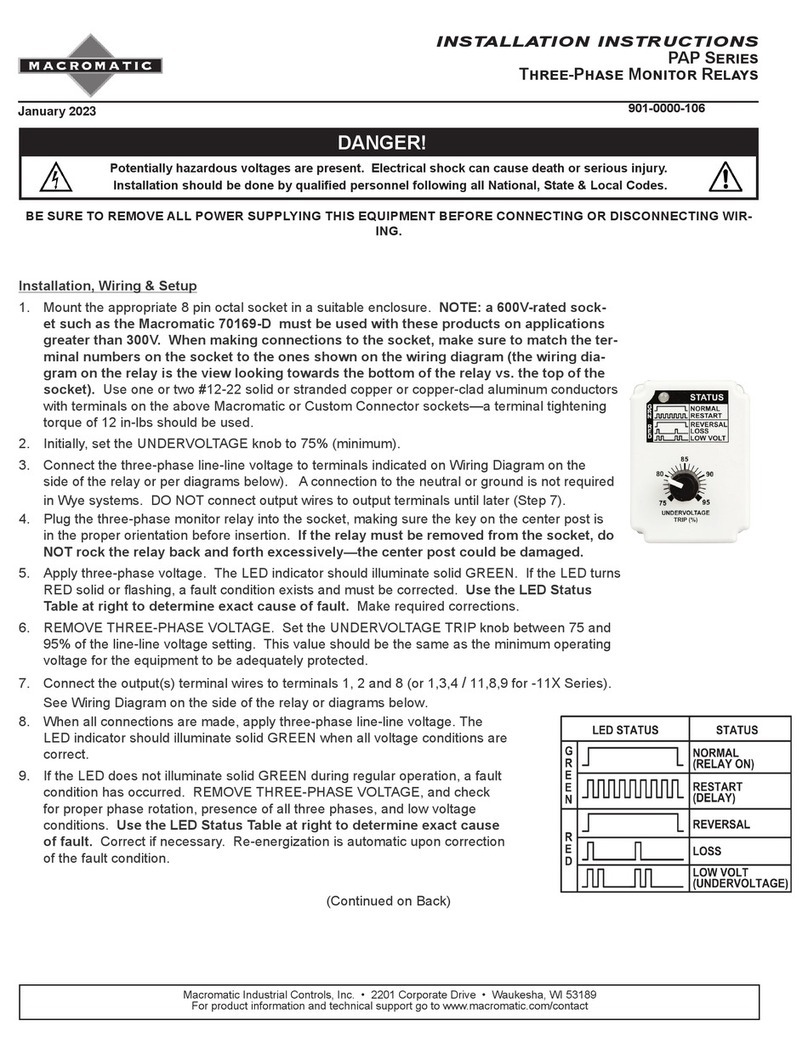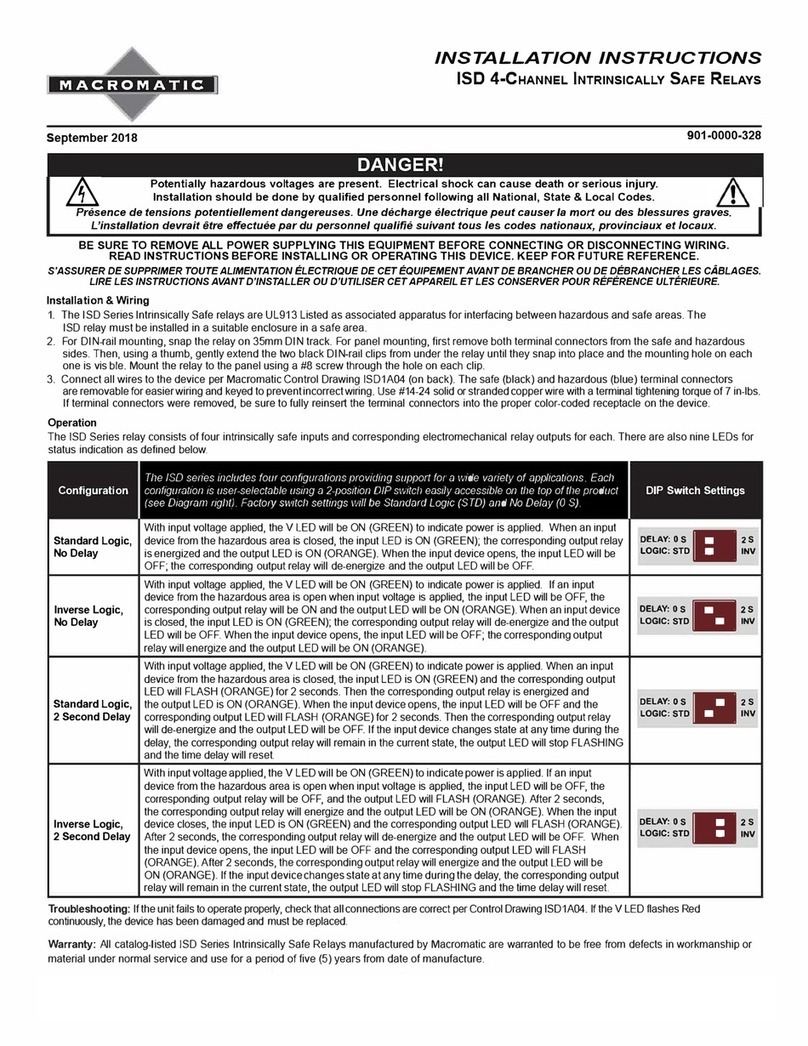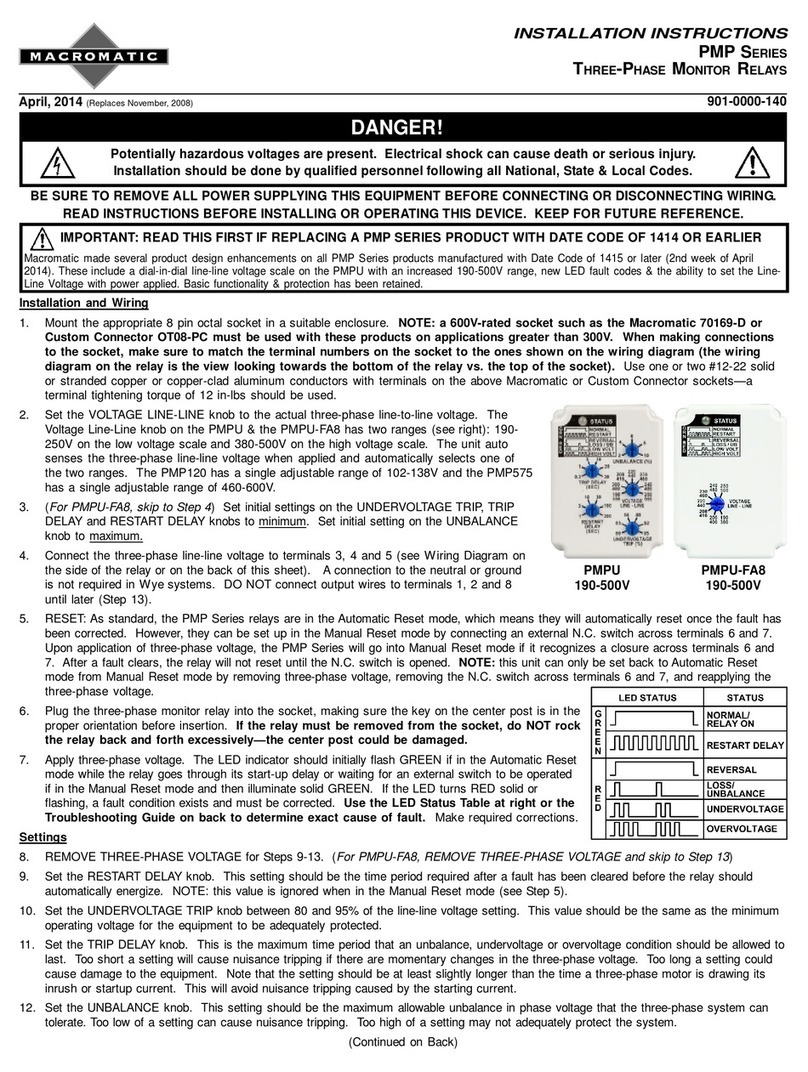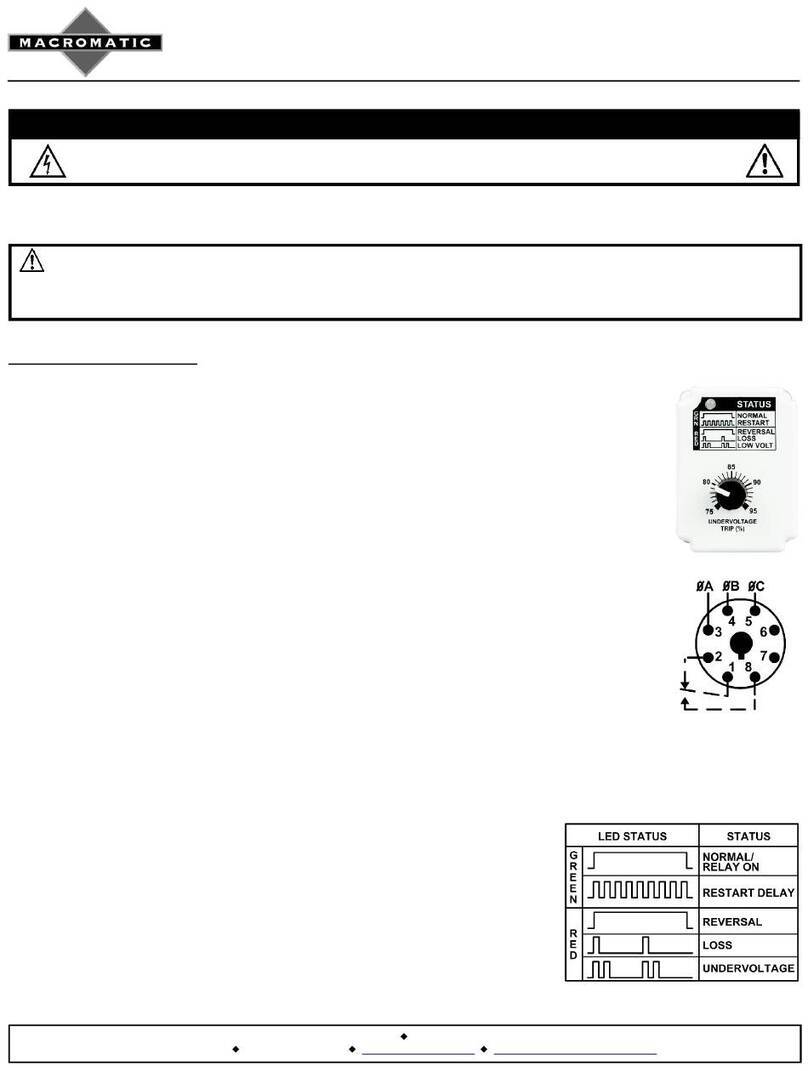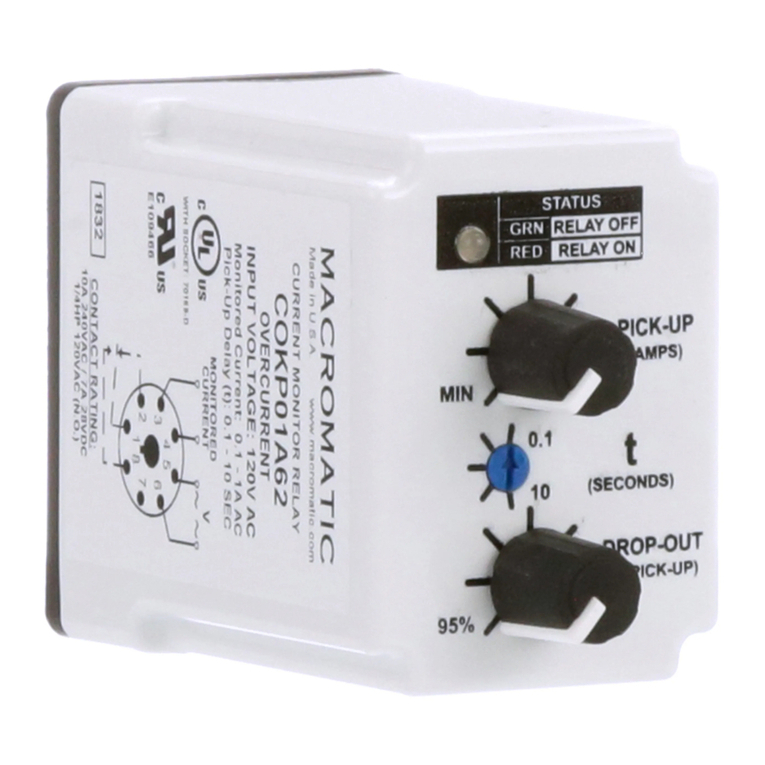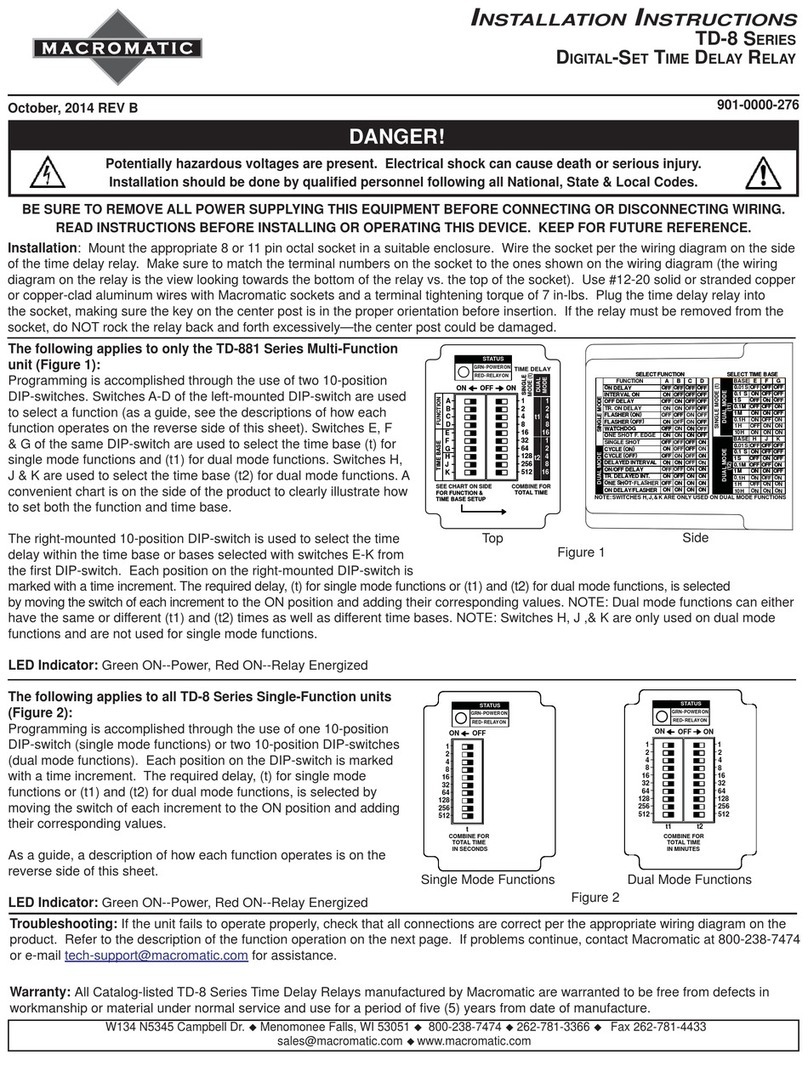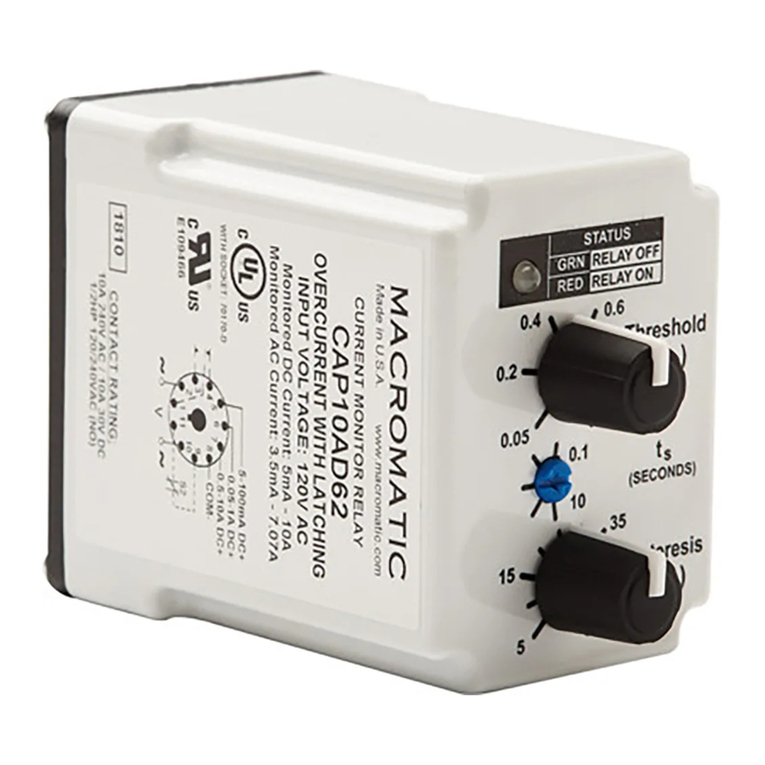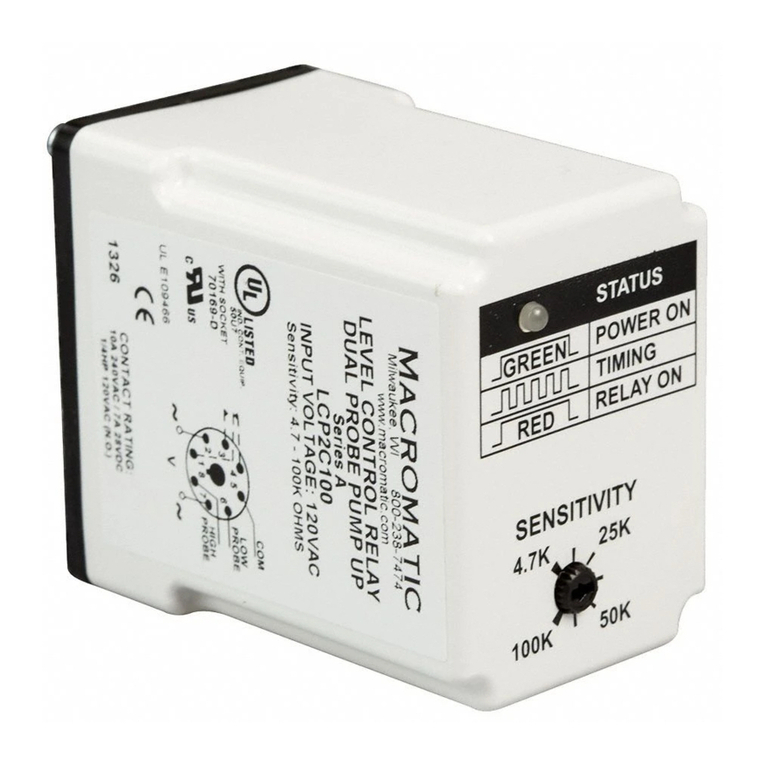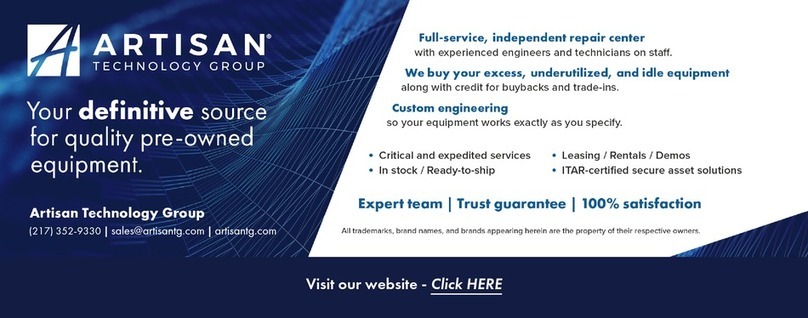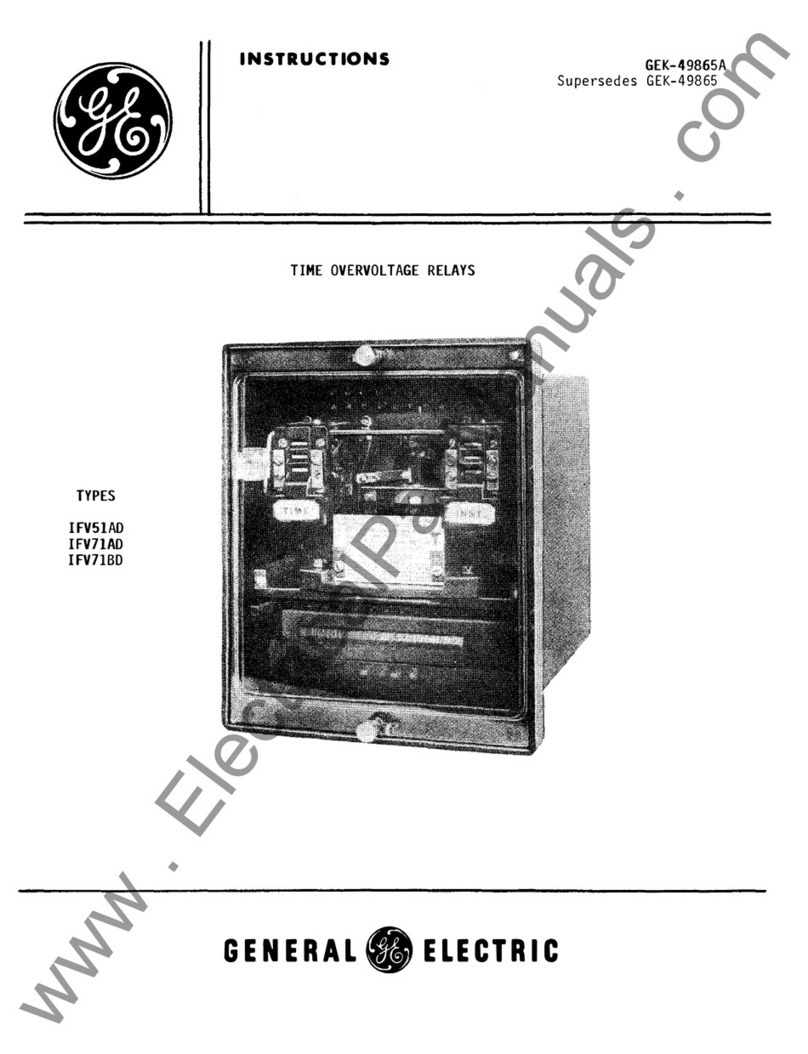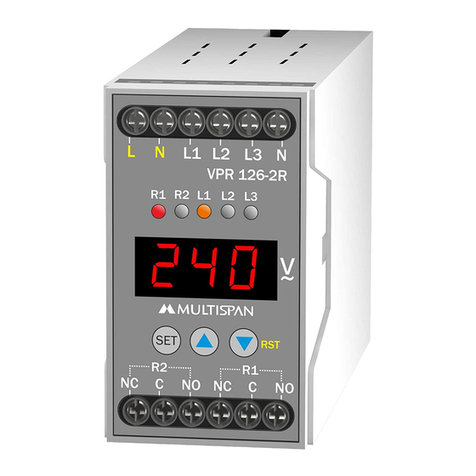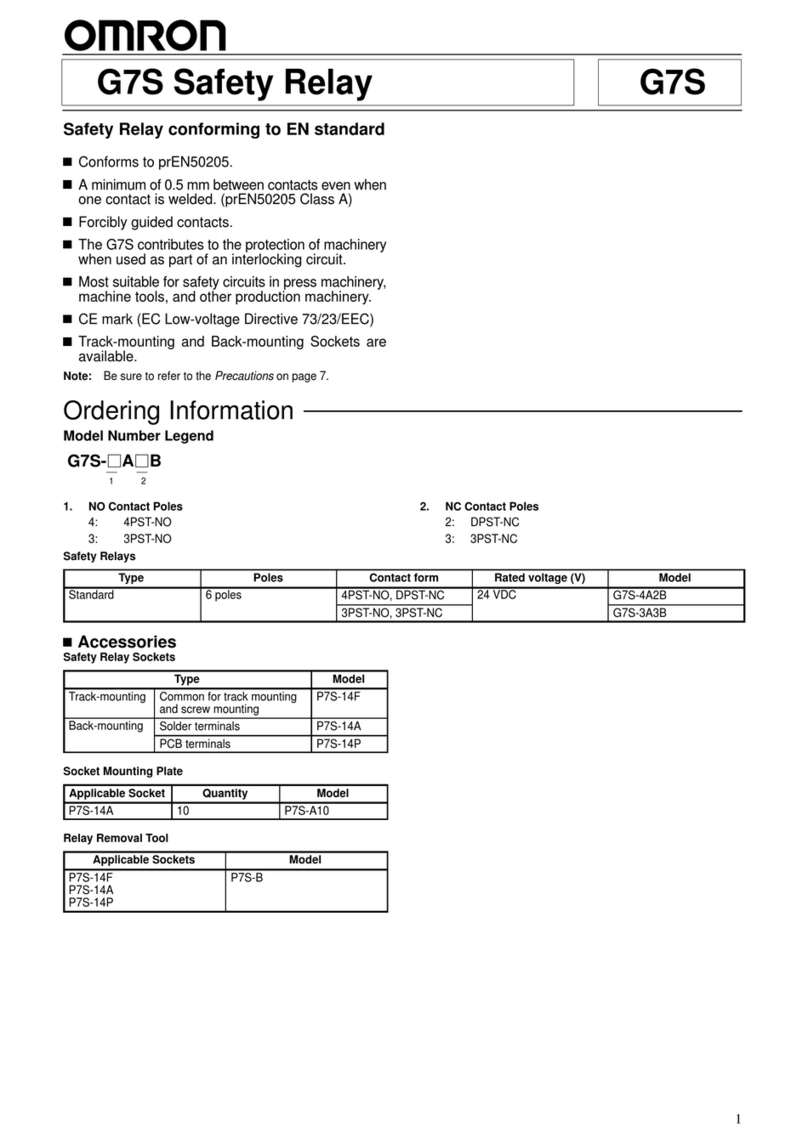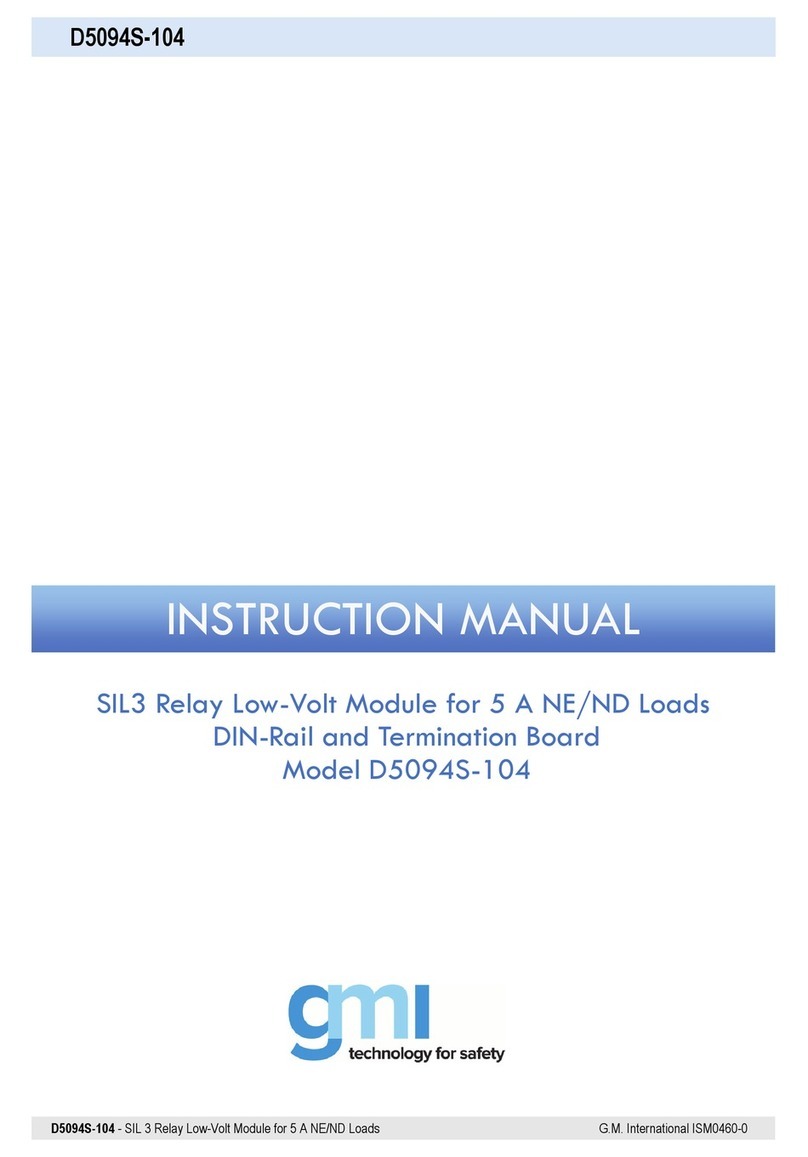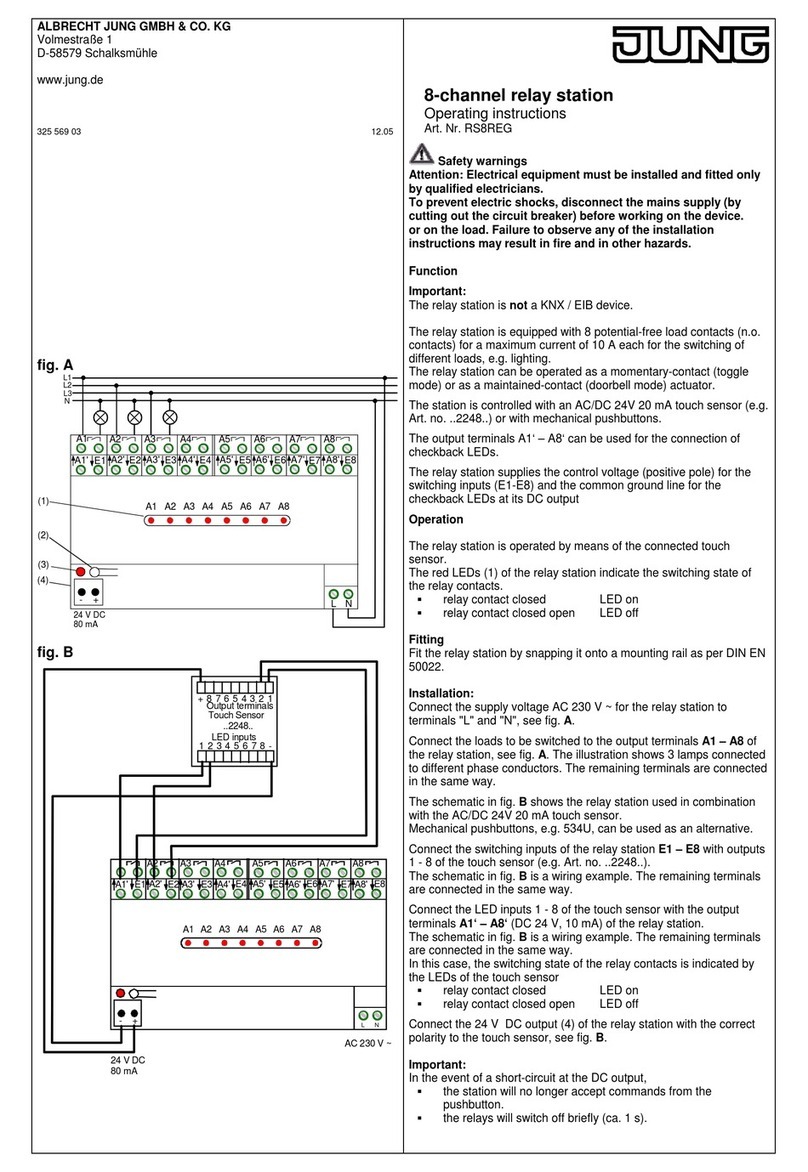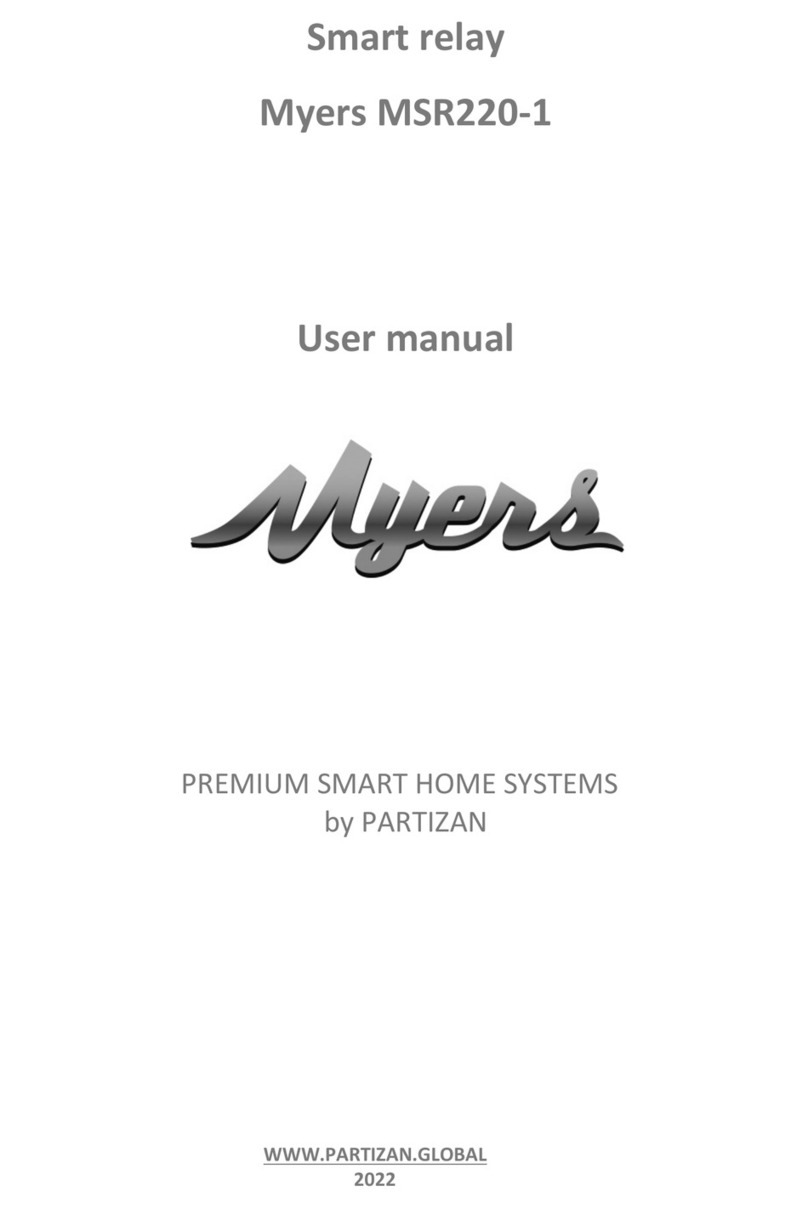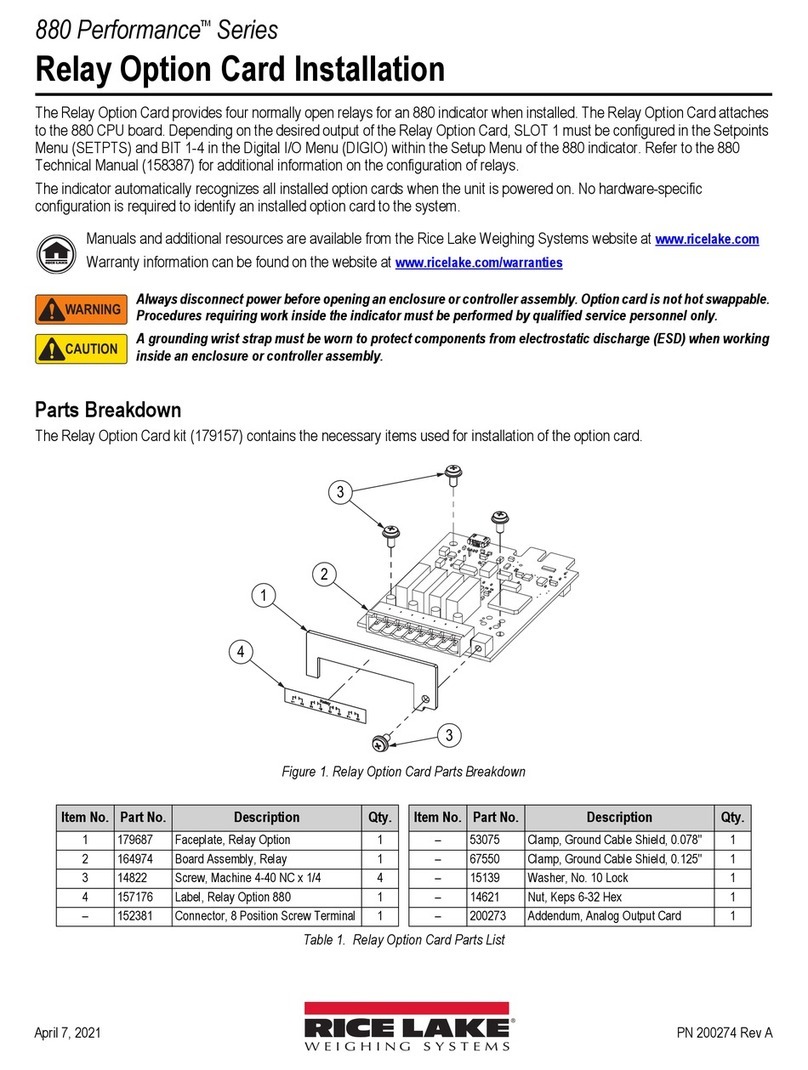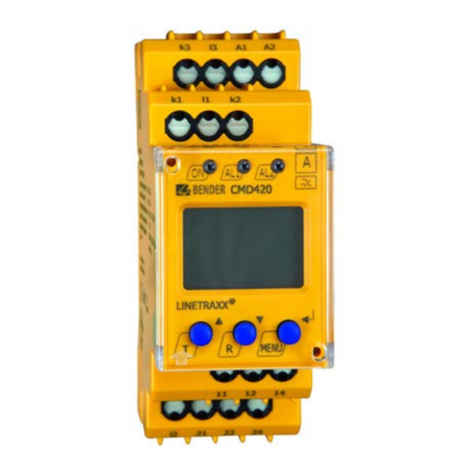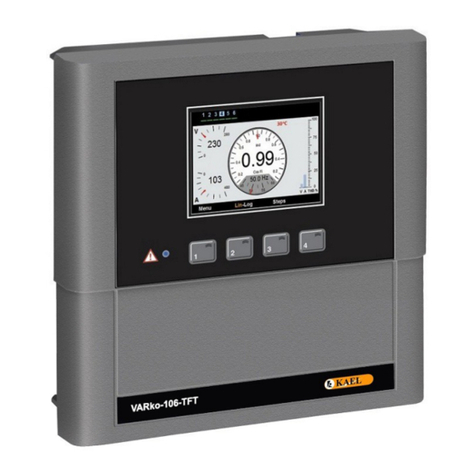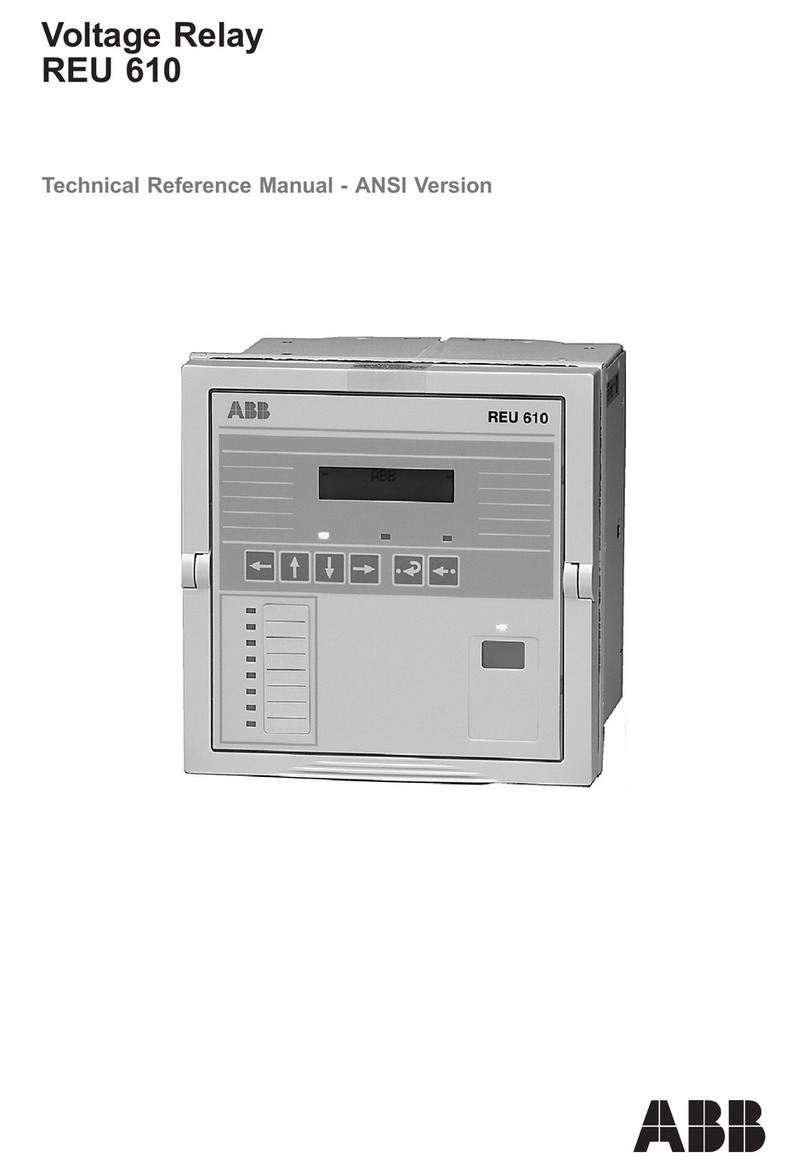
Installation, Wiring & Setup
1. Mount the appropriate 8 pin octal socket in a suitable enclosure. NOTE: a 600V-rated sock-
et such as the Macromatic 70169-D or Custom Connector OT08-PC must be used with
these products on applications greater than 300V. When making connections to the
socket, make sure to match the terminal numbers on the socket to the ones shown on
the wiring diagram (the wiring diagram on the relay is the view looking towards the bot-
tom of the relay vs. the top of the socket). Use one or two #12-22 solid or stranded copper
or copper-clad aluminum conductors with terminals on the above Macromatic or Custom Con-
nector sockets—a terminal tightening torque of 12 in-lbs should be used.
2. Initially, set the UNDERVOLTAGE knob to 75% (minimum).
3. Connect the three-phase line-line voltage to terminals 3, 4 and 5 (see Wiring Diagram on the
side of the relay or at right). A connection to the neutral or ground is not required in Wye
systems. DO NOT connect output wires to terminals 1, 2 and 8 until later (Step 7).
4. Plug the three-phase monitor relay into the socket, making sure the key on the center post is
in the proper orientation before insertion. If the relay must be removed from the socket, do
NOT rock the relay back and forth excessively—the center post could be damaged.
5. Apply three-phase voltage. The LED indicator should illuminate solid GREEN. If the LED turns
RED solid or flashing, a fault condition exists and must be corrected. Use the LED Status
Table at right to determine exact cause of fault. Make required corrections.
6. REMOVE THREE-PHASE VOLTAGE. Set the UNDERVOLTAGE TRIP knob between 75 and
95% of the line-line voltage setting. This value should be the same as the minimum operating
voltage for the equipment to be adequately protected.
7. Connect the output terminal wires to terminals 1, 2 and 8 (see Wiring
Diagram on the side of the relay or below).
8. When all connections are made, apply three-phase line-line voltage. The
LED indicator should illuminate solid GREEN when all voltage conditions are
correct.
9. If the LED does not illuminate solid GREEN during regular operation, a fault
condition has occurred. REMOVE THREE-PHASE VOLTAGE, and check
for proper phase rotation, presence of all three phases, and low voltage
conditions. Use the LED Status Table at right to determine exact cause
of fault. Correct if necessary. Re-energization is automatic upon correction
of the fault condition.
(Continued on Back)
INSTALLATION
INSTRUCTIONS
PAP SERIES
THREE-PHASE MONITOR RELAYS
901-0000-106
May 2015 REV C (Replaces October, 2014)
DANGER!
Potentially hazardous voltages are present. Electrical shock can cause death or serious injury.
Installation should be done by qualified personnel following all National, State & Local Codes.
BE SURE TO REMOVE ALL POWER SUPPLYING THIS EQUIPMENT BEFORE CONNECTING OR DISCONNECTING WIRING.
READ INSTRUCTIONS BEFORE INSTALLING OR OPERATING THIS DEVICE. KEEP FOR FUTURE REFERENCE.
W134 N5345 Campbell Drive Menomonee Falls, WI 53051
Diagram 23
IMPORTANT: READ THIS FIRST IF REPLACING A PAP SERIES PRODUCT WITH DATE CODE OF 1414 OR EARLIER
Macromatic made several product design enhancements on all PAP Series products manufactured with Date Code of 1415 or later (2nd week ofApril 2014).
These include eliminating the separate 50/60Hz scales on the Undervoltage Trip dial setting and replacing it with a single scale that works on both 50 & 60Hz
(see photo below right) & new LED fault codes. Basic functionality & protection has been retained. For more information, please contact Macromatic.

